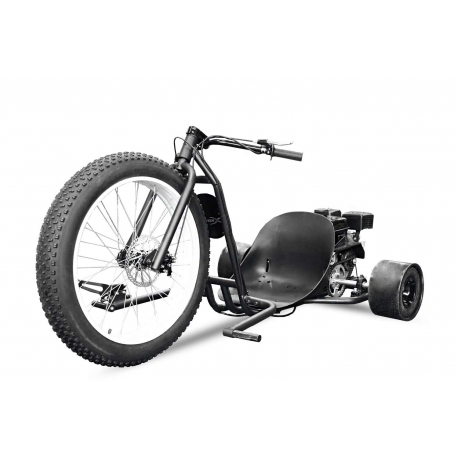Car door lock mechanism repair play a crucial role in vehicle security, ensuring that doors can be locked and unlocked. These systems comprise several key components: the lock cylinder, latch, actuator, and rods that interconnect the internal elements. Mechanical locks rely on manual operation and are typically found in older vehicles. In contrast, modern cars often feature electronic locking systems, utilising remote controls and keyless entry for added convenience and security.
Operates the Latch to Secure the Door
The lock cylinder is where the key is inserted, and it operates the latch to secure the door. The actuator is an electrical component that drives the locking and unlocking process, especially in vehicles with central locking systems. Rods and cables connect these parts, allowing coordinated movement when the lock engages or disengages. Each component must work harmoniously for the door lock mechanism to function effectively.
Understanding how these parts interact is vital for anyone attempting to diagnose or repair car door lock mechanism issues. Given the variety of lock types found in different vehicle models, familiarity with both mechanical and electronic systems is beneficial.
Typical Problems with Car Door Locks
Car door locks are prone to several common issues over time. One frequent problem is difficulty turning the key within the lock cylinder. This can often be attributed to wear and tear or the accumulation of dirt and debris inside the lock mechanism. Another issue is the key getting stuck, which can be caused by misalignment within the lock components or a damaged key.
Electronic locks may exhibit unresponsiveness to remote commands. This could be due to a faulty actuator or vehicle electrical system problems. Intermittent functioning is another sign that something might be amiss, potentially indicating loose connections or wiring issues.
Sometimes, the door may not lock or unlock properly, which can be inconvenient and pose a security risk. This might stem from a malfunctioning actuator, worn-out lock cylinder, or broken rods and cables within the mechanism. Identifying and addressing these symptoms early on can prevent the issues from escalating and ensure that the car door lock mechanism remains in good working order.
Tools Needed for Lock Repairs
Repairing a car door lock mechanism necessitates a range of specific tools to ensure the task is executed accurately.
Set of Screwdrivers
Fundamental tools required include a set of screwdrivers, which will aid in removing screws from the door panel, and pliers, helpful for manipulating small components within the lock mechanism.
Trim Removal Tool
A trim removal tool is also indispensable for safely detaching the door panel without damaging the interior trim.
Socket Set
A socket set may be required to remove bolts securing the lock mechanism.
Safety Gear
Moreover, it is advisable to wear safety gear such as gloves and safety glasses to protect against sharp edges or debris encountered during the repair process.
Lubricant
Additional items like a lubricant, preferably graphite-based, can help ensure the smooth operation of moving parts within the lock mechanism.
Torch On Hand
A torch on hand can illuminate hard-to-see areas within the door.
Process More Efficient
The correct tools make the repair process more efficient and significantly reduce the risk of further damage to the lock system.
Enhancing Your Car Door Locks
Enhancing vehicle security through modern lock upgrades can significantly boost safety and convenience. Keyless entry systems are increasingly popular, allowing drivers to unlock and start their cars without inserting a key. Smart locks go a step further, offering features such as biometric access, where fingerprint recognition is used for entry, or smartphone integration, enabling remote locking and unlocking via a mobile app.
These advanced systems not only deter potential thieves but also simplify user access. Many of these upgrades can be retrofitted to existing car door lock mechanisms, making them a versatile option for enhancing vehicle security without needing a complete overhaul.
Additionally, anti-theft measures like deadbolts or reinforced strike plates can fortify the lock against forced entry attempts. Ensuring compatibility with the vehicle’s existing electrical system is crucial for seamlessly integrating these advanced security features. By adopting these modern technologies, vehicle owners can enjoy enhanced security and ease of use.
Comprehensive Repair Instructions: Door Locking Mechanism
The initial step in repairing a door locking mechanism involves removing the door panel.
Unscrewing Several Screws
This typically requires unscrewing several screws and disengaging clips that hold the panel in place. A trim removal tool is highly effective for this purpose, as it helps prevent damage to the interior trim.
Lock Mechanism
Once the panel is detached, the lock mechanism will be exposed. Depending on the identified problem, the lock cylinder or actuator components may need to be repaired or replaced.
Lock Cylinder
Inspect the lock cylinder for any signs of wear or damage and ensure that all rods and cables are correctly connected and undamaged.
Disconnect Any Electrical Connections
If replacing the actuator, disconnect any electrical connections and remove the mounting bolts to extract the faulty component.
New Actuator
Install the new actuator, ensuring it is securely fastened and all connections are correctly reattached.
Aligned and Securely Fastened
It is crucial to ensure all components are correctly aligned and securely fastened during reassembly. Reattach the door panel by carefully aligning it with the frame and securing it with screws and clips.
Test the Lock Mechanism
Before finalising the repair, test the lock mechanism multiple times to ensure it operates smoothly and effectively. This thorough approach will help ensure a successful door lock mechanism repair.
Tips for Preventative Maintenance
Regular upkeep of car door locks can prevent many common problems and ensure reliable operation. One crucial aspect is periodic lubrication of the lock cylinder and other moving parts with a graphite-based lubricant, which can reduce friction and wear. Additionally, checking the door’s alignment is essential, as misalignment can place undue stress on the lock mechanism, leading to potential failures over time.
Another valuable practice is to regularly inspect the condition of the key used in the lock. A worn or damaged key can cause internal damage to the lock cylinder, so replacing a compromised key promptly is advisable. Cleaning the lock mechanism to remove any accumulated dirt and debris is also essential, as foreign particles can impede the smooth functioning of the lock.
Furthermore, keeping the electronic components of modern locking systems in good condition is equally important. This includes regularly checking the battery levels of remote controls and ensuring all electrical connections are secure and corrosion-free.
Troubleshooting Advice for Difficult Locks
Troubleshooting car door locks that present persistent issues requires a strategic approach.
- Begin by verifying the condition of the key; a worn or damaged key can often be the culprit behind malfunctioning locks.
- If the key is in good condition, consider using a graphite-based lubricant to alleviate any stiffness within the lock cylinder.
- This type of lubricant is particularly effective at reducing friction without attracting dust and debris.
- Checking the battery life of the remote control is a crucial step for electronic locks that fail to respond to remote commands.
- Additionally, ensure that all electrical connections within the lock mechanism are secure and corrosion-free.
- Loose or corroded wires can disrupt the functionality of the actuator and other electronic components.
Avoid Further Complications
If the lock mechanism remains unresponsive despite these efforts, it may be necessary to inspect the internal components for wear or damage. This involves removing the door panel to gain access to the lock assembly, a process that requires caution to avoid further complications. If any components appear worn or broken, replacement might be necessary to restore proper function.
When these troubleshooting steps do not resolve the issue, it is advisable to consult a professional locksmith or automotive technician to prevent inadvertent damage.
Conclusion
In closing, addressing car door lock mechanism repair can be both a practical and satisfying endeavour for those interested in automotive maintenance. Understanding the structure and function of car door locks can identify and resolve common issues efficiently. Equipped with the appropriate tools and following detailed repair instructions, even complex tasks become manageable. Regular preventative maintenance, such as lubrication and alignment checks, can avert many problems before they arise. Modern upgrades like keyless entry and smart locks offer enhanced protection and convenience for those seeking to bolster their vehicle’s security.
FAQs
What are the common issues with car door lock mechanism repair?
Common issues include a stuck or unresponsive lock, difficulty locking or unlocking the door, and a malfunctioning remote key fob. Worn-out components, electrical issues, or physical damage to the car door lock mechanism repair can cause these problems.
What tools do I need to repair my car door lock mechanism?
Essential tools include a Phillips and flat-head screwdriver, a trim panel removal tool, needle-nose pliers, and a socket wrench set. These handy tools will help you disassemble the door panel and access the lock mechanism safely and effectively.
What are some tips for repairing a car door lock mechanism?
Firstly, carefully remove the door panel to access the lock mechanism. Check for any visible damage or wear and tear. Clean and lubricate the moving parts to ensure smooth operation. If a component, such as a latch or actuator, is broken, replace it with a compatible part. Always consult your vehicle’s manual for specific instructions and safety precautions.
| Related Business Listings |
| Contact Directory |
| Local Business Profiles |




